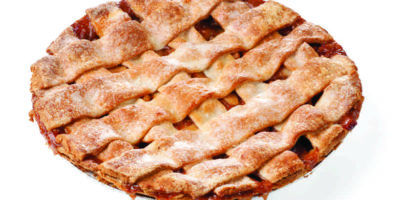From London with Passion…
Tiny diamond in nose, big brown eyes, bright red lipstick, a bowler hat or more traditional turban playing on Orthodox-married-woman-hair-covered modesty, Jacqueline Nicholls could well be London’s explosively creative gift to Jewish Orthodox feminism.
New Yorkers were lucky to have “Jacqueline Nicholls: New Work” on view at the JCC in Manhattan’s Laurie M. Tisch Gallery for two months ending Nov. 1. (You can catch the entire show on Nicholls’ website, jacquelinenicholls.com — The Kittel Collection, an exploration of clothing in Jewish tradition; Ghosts & Shadows: The Women Who Haunt the Talmud; and Gather the Broken, a series of drawings counting the Omer, the 49 days between Passover and Shavuot.)
In 2010, Nicholls’ The Ladies Guild Collection of dirty doily paper-cuts was shown at the JOFA (Jewish Orthodox Feminist Alliance) conference in New York. Words of rabbinic misogyny are painstakingly cut out in Hebrew and/or English (see paper-cut in Lilith’s fall 2011 issue) on what look like paper doilies with sexualized images of women. With training in architecture and work in medical illustration, Nicholls’ transgressive doilies reference the Orthodox synagogue of her childhood, where the main job of the Ladies’ Guild (the sisterhood) was to serve refreshments.
Look closely at the texts and be shocked, outraged. Jewish men said that?! How dare they.
Nicholls’ work from the past two years is subtler, literally more layered. The Kittel Collection — clothing cut with haute couture skill and creativity (previewed in early 2012 on “The Sisterhood” blog at the Forward) — is based on the white garment worn by a traditional Jewish male at his wedding, when leading a seder, and on other ritual occasions. The most potent of Nicholls’ garments is the modesty (tzniut) kittel. The arms are knotted together like a straight jacket. Subtle enough to be overlooked is the white-on-white embroidery of pornographic figures. Nicholls’ message: Judaism’s tzniut texts amount to pornography — instruction books dissecting women, body part by body part, insulting to both women and men.
Ghosts & Shadows comes across as skillful, scholarly, subtle with layers of gauze fabric revealing glimpses of nameless women under the embroidered top layer with Talmudic text. Nicholls explains: “Whether or not these women ever existed, what’s interesting is that it’s the women characters who are the catalyst for change, … subverting male rabbinic thinking.” But at least for this viewer, these gauzy glimpses lack the visual potency of her paper-cuts.
The most intriguing among the Ghosts & Shadows is “Shmuel’s Daughters.” They admitted to having been kidnapped but testified to the male authorities that they were not sexually compromised, and so were allowed to marry. Nicholls’ take on the tale: Even more important than whether or not they had been violated, thanks to their testimony they were able to get on with their lives. As the daughters of a scholar, they knew how to play the game.
Nicholls may be ready to move on from her earlier work, but the paper-cuts won’t take a back seat. In her words: “I keep thinking I’m finished with the paper-cuts, but then events conspire in the Jewish world.”
When Anat Hoffman was arrested at Jerusalem’s Western Wall for saying the Sh’ma prayer, Nicholls felt compelled to return to her paper-cut of a woman with her mouth cut out. She featured the image in her October blog (http://jacquelinenicholls.blogspot.com).
Forget simplistic positions on Jewish women speaking out. Nicholls admits that she’d like to silence the women desperately competing for “Jewish Mum of the Year” on British reality TV “at its worst.” Loud, crude, an embarrassment. And she’d like to get the ultra-Orthodox U.K. women who have been coerced into improper sexual activities to speak out. As Nicholls says on her blog, “This is about Jewish women finding their voices, speaking up, protesting our dismay and anger at how women are being treated.” She’s currently at work on a new paper-cut about women’s voices.


